Physical Address
304 North Cardinal St.
Dorchester Center, MA 02124
Physical Address
304 North Cardinal St.
Dorchester Center, MA 02124
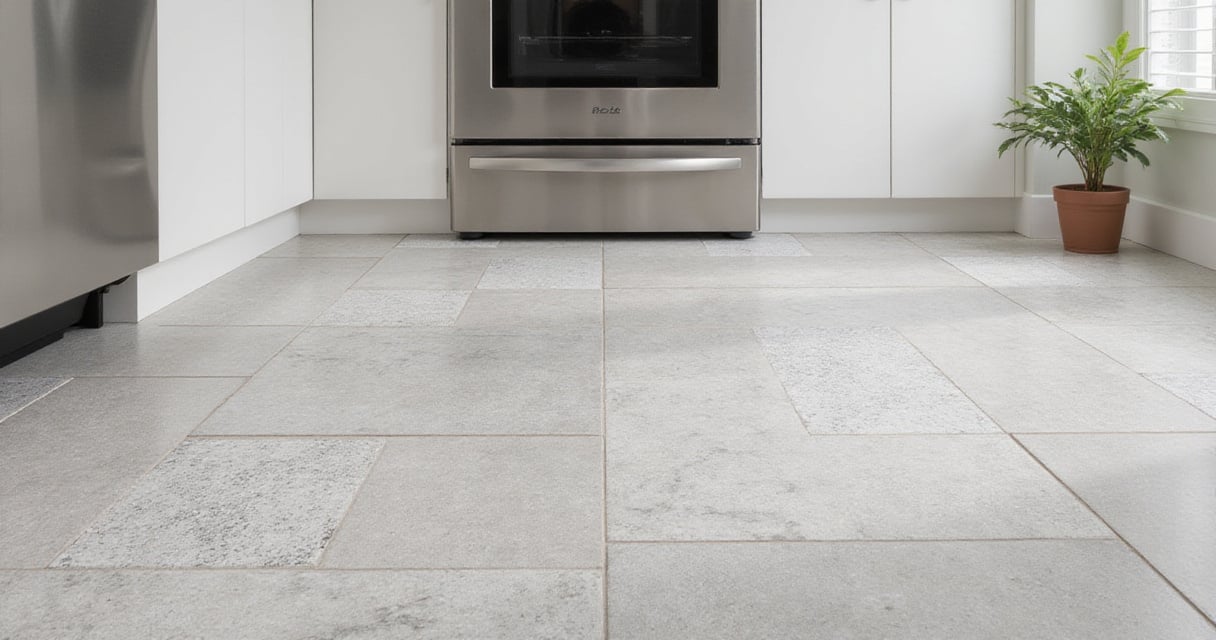
Discover 20 essential things to know about kitchen floor tile, from material comparisons to design patterns and maintenance tips. Learn how to choose the perfect tile flooring for your kitchen that combines durability, style, and practicality.
More than any other room, the kitchen tells the story of a house’s evolution. It’s where generations of technology and lifestyles collide, often unceremoniously. I’ve peeled back layers of linoleum in 1890s Victorians to find the original heart pine floors, scored and stained from a century of life. The kitchen floor is the stage for our daily lives, and in an older home, it’s a critical link between the building’s past and its present.
Choosing a floor isn’t just about picking something that looks nice. It’s about finding a material that can withstand the chaos of a modern kitchen while respecting the soul of a house that has already stood for decades, or even centuries. It’s a design decision, yes, but for those of us who live in and love older homes, it’s also an act of stewardship. So, let’s talk tile.
People often use these terms interchangeably, but from a conservation and performance perspective, they are worlds apart. Think of ceramic tile as a durable, baked earthenware and porcelain as its high-fired, vitrified cousin. The real difference is water absorption. Porcelain is fired hotter and made from finer, denser clay, making it almost completely waterproof—its absorption rate is less than 0.5%. Ceramic is more porous.
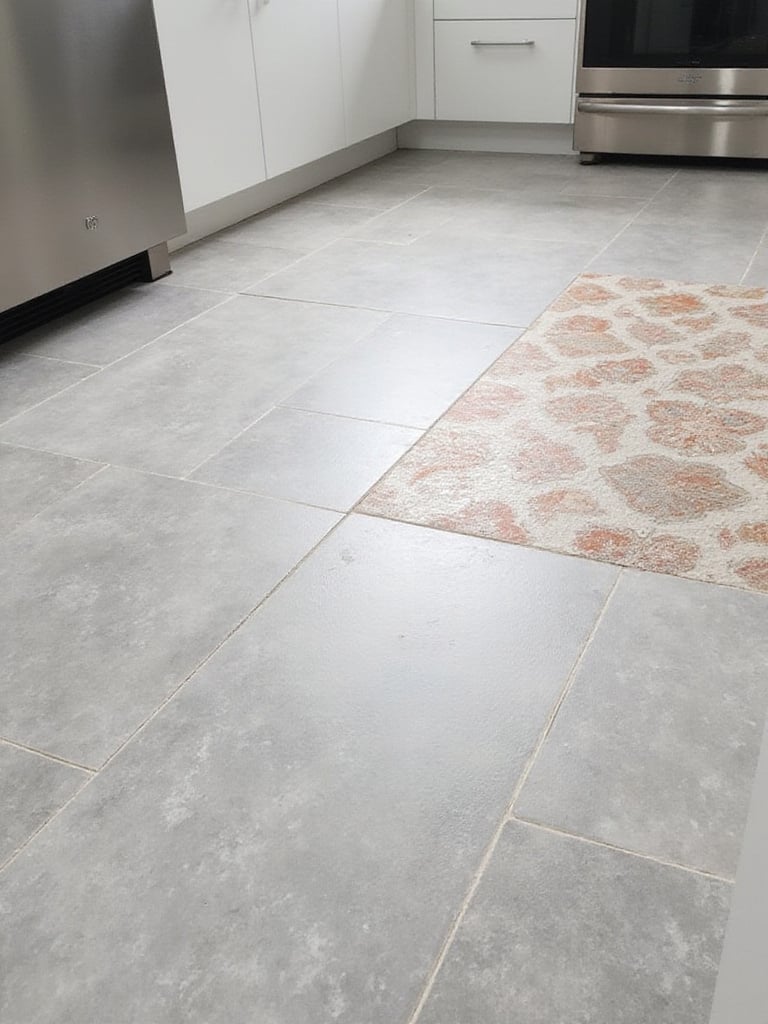
Now, why does this matter in your Queen Anne or Craftsman home? Old houses breathe and shift, and moisture can be a more persistent enemy than in a new build. What I tell my clients is to think about longevity. A porcelain tile floor is an incredibly stable and impermeable barrier protecting the old-growth wood subfloor and joists that you absolutely want to preserve. Last year, on a 1920s Tudor renovation, a plumbing leak under the sink would have been a catastrophe. But because we’d installed a porcelain tile floor, the water pooled on top and caused zero damage to the historic structure underneath. That’s a huge win.
When I walk into a historic home, I’m looking at how materials have aged. The soft dip in a stone threshold, the gentle wear on a wooden newel post—these tell a story. You want your kitchen floor to have that same potential for graceful aging, which means you need to think about durability from day one. It’s not just about looks; it’s about choosing a material that can become part of the house’s ongoing history.
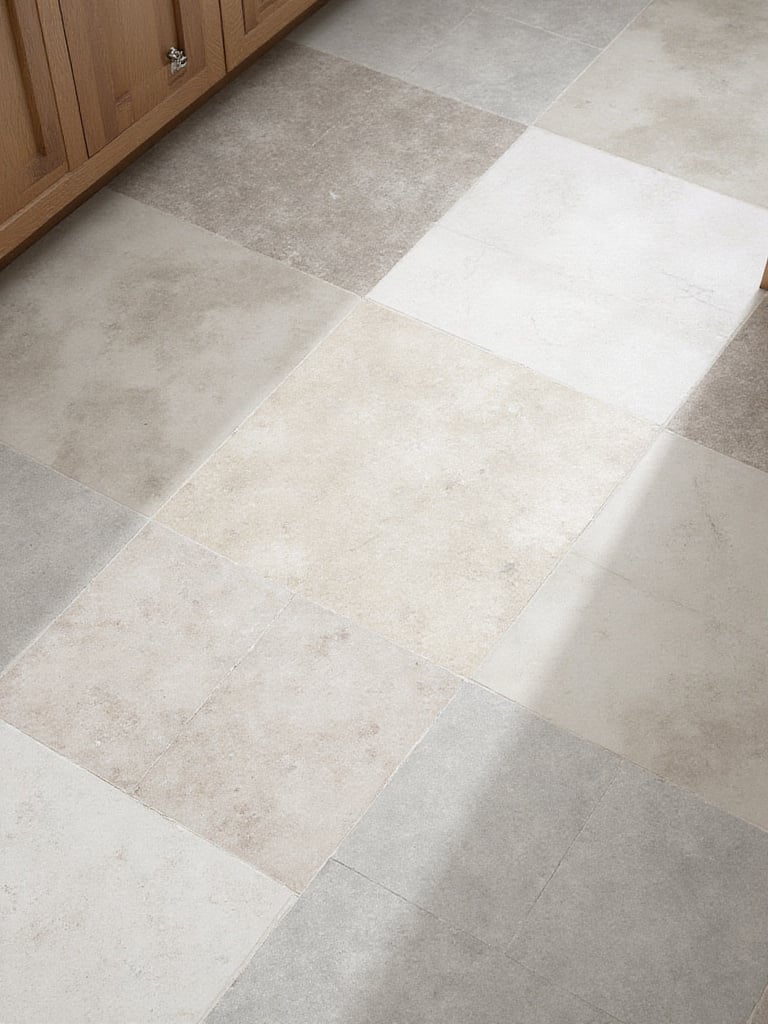
We use a few metrics to gauge this. The PEI rating (from the Porcelain Enamel Institute) measures resistance to wear and tear. For a kitchen, you don’t want to go below a PEI 3, and honestly, a 4 is better. But here’s an insider tip: look for “through-body” or “color-body” porcelain. This means the color isn’t just a glaze on the surface; it runs all the way through the tile. So when you inevitably drop a cast iron skillet and chip the tile (and you will), the ding will be the same color as the surface. It’s a small detail that makes a world of difference in hiding wear over the years.
Water is the arch-nemesis of old houses. It’s the single most destructive force I contend with in my conservation work. The original builders knew this, which is why kitchens in older homes that still have their original floors often feature materials like slate or quarry tile—if they weren’t just plain, hard-wearing wood. They were looking for something that could handle a sloshed bucket of water.
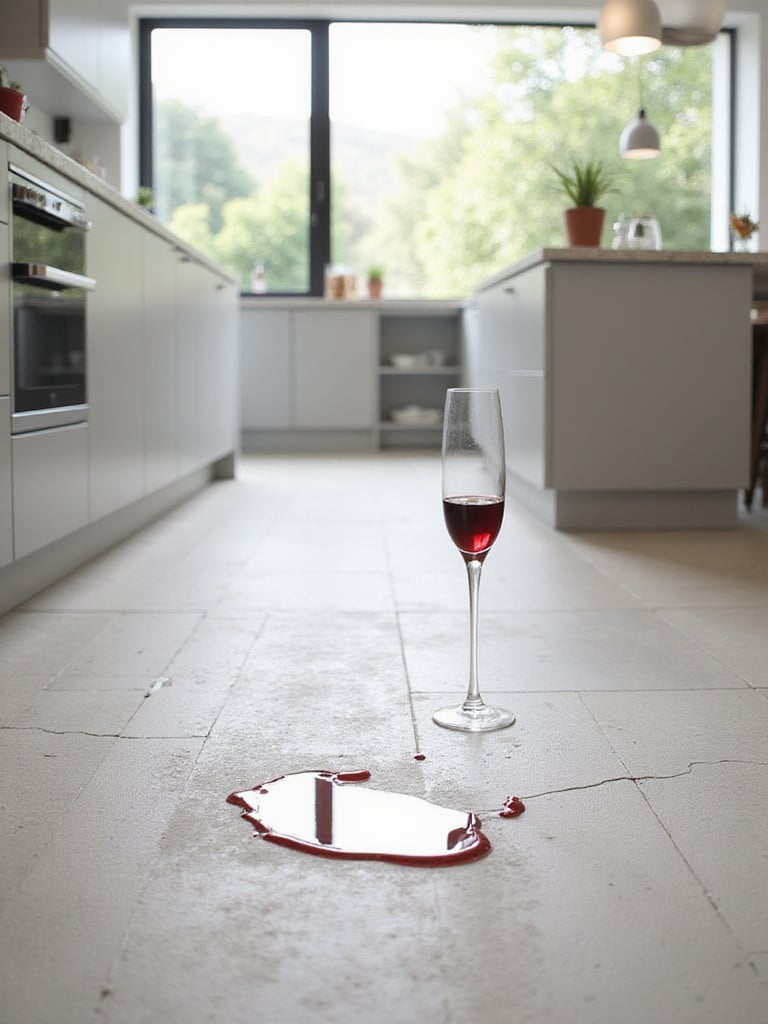
This is where modern tile, especially porcelain, becomes a preservationist’s best friend. With that sub-0.5% water absorption rate, it’s essentially waterproof. It creates a protective shield over your subfloor. But—and this part’s important—the tile is only as good as the grout lines. In my experience with heritage conservation, the biggest point of failure is always the small stuff. An unsealed or cracked grout line is a tiny highway for water to get to the vulnerable wooden structure below. Don’t skip the sealer. Ever.
Let’s be honest, historic homes can sometimes feel like they demand constant upkeep. The beauty of a well-chosen tile floor is that it asks for very little in return. Compared to the ordeal of refinishing historic wood floors or the heartbreak of a red wine spill on porous limestone, tile is wonderfully low-maintenance. A simple sweep and a mop with a pH-neutral cleaner is usually all it takes.
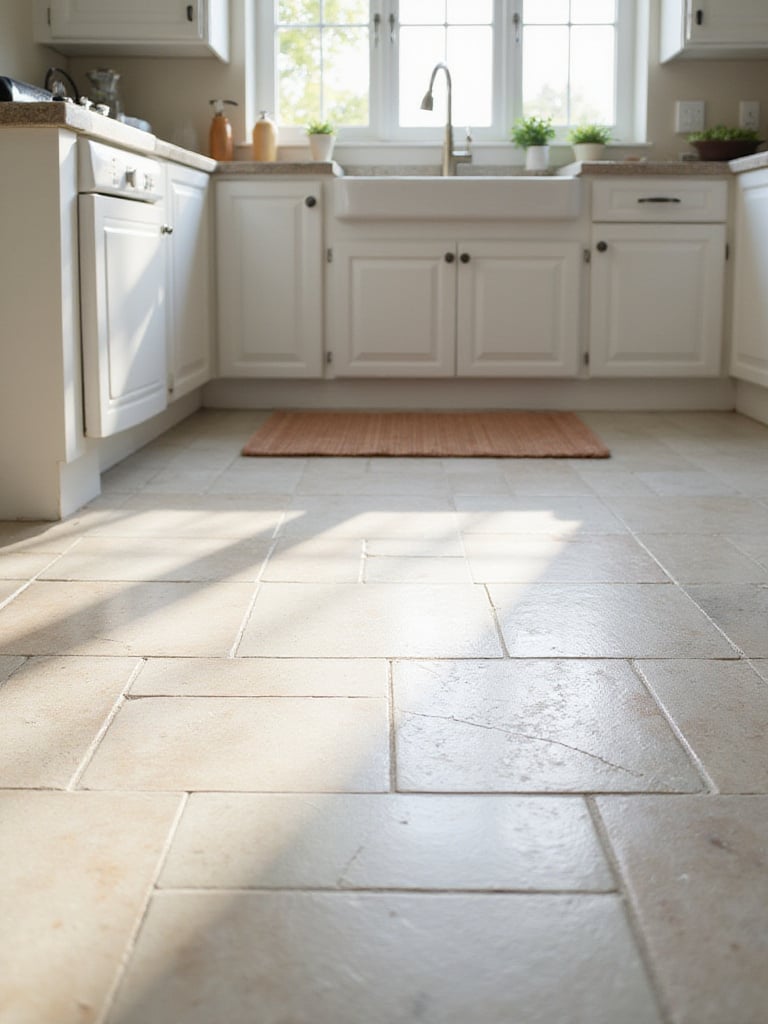
The real task is the grout. Grout is porous, and it will soak up everything from coffee to tomato sauce if you let it. I once worked on a beautiful Arts and Crafts home where the owners had chosen a stunning patterned tile but with a bright white grout. A year later, it looked like a sad, stained checkerboard. We ended up having to professionally stain the grout a dark charcoal to salvage the look. I learned this when… I was a junior designer: never recommend light-colored grout for a kitchen floor unless you’re using an epoxy grout, which is far more stain-resistant, or you have a client who truly, genuinely loves to scrub.
Here’s where it gets fun. Tile offers a chameleon-like ability to fit into almost any architectural period without feeling dishonest. You aren’t “faking” a wood floor; you’re choosing a tile that evokes a certain feeling. You can find beautiful tiles that look like slate or soapstone, perfect for a Colonial or farmhouse kitchen. There are encaustic-style pattern tiles that feel right at home in a Victorian or Spanish Revival house.
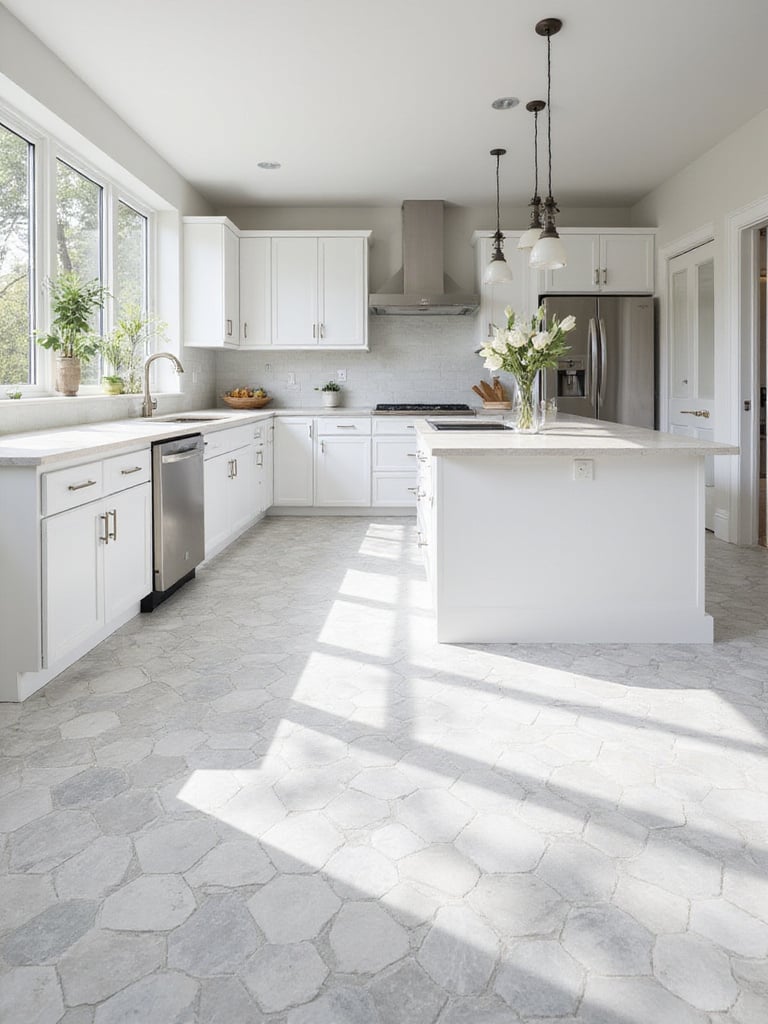
What really gets me excited is seeing how contemporary tile can complement historic architecture. On a recent project, we used a large-format, matte-finish concrete-look porcelain tile in the kitchen of a very traditional 1910 Foursquare. It sounds jarring, but it worked beautifully. Why? Because its simplicity and honesty didn’t try to compete with the home’s original ornate woodwork. It provided a quiet, modern backdrop that made the historic details shine even brighter. It’s all about the conversation between the old and the new.
I know this is the question on everyone’s mind. And talking about tile cost is tricky, because the tile itself is only one part of the equation. Ceramic can be as cheap as a dollar or two per square foot. Gorgeous, handcrafted terracotta or natural stone can be upwards of $30 or $40. Porcelain sits somewhere in the middle.
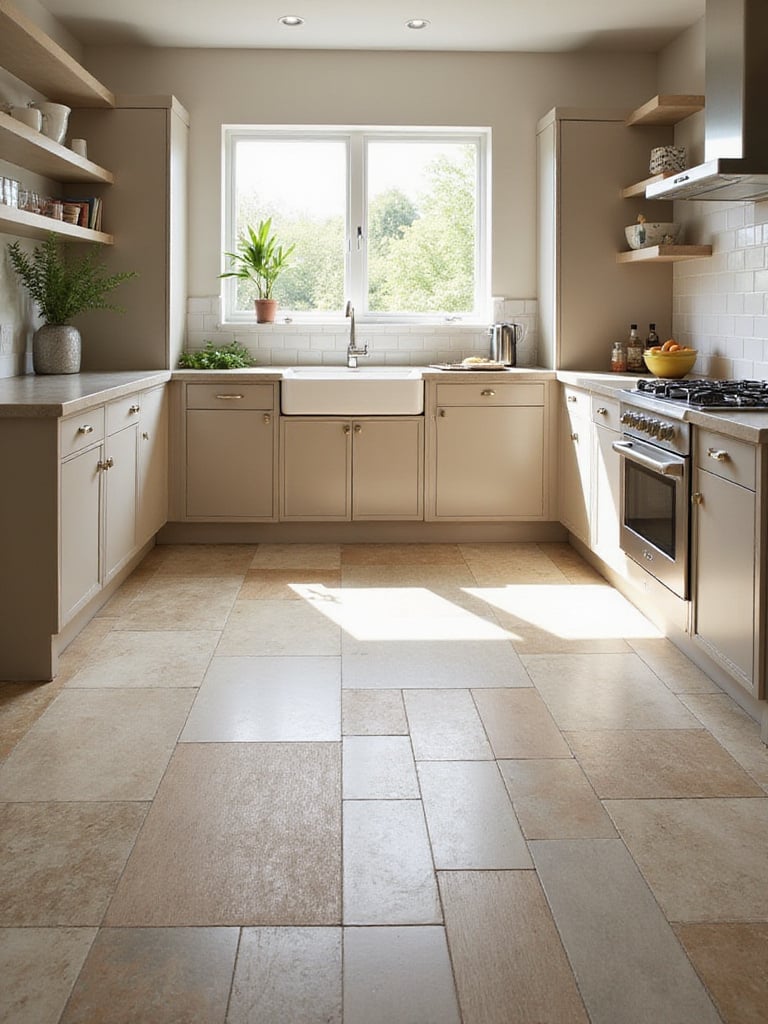
But the real cost, especially in an old house, is in the prep work. Your floor is probably not level. I can almost guarantee it. Years of settling, old repairs, and layers of previous flooring create a challenging landscape. You have to budget for a professional to create a perfectly flat, stable substrate for the tile. Ignoring this is the most expensive mistake you can make. What I tell my clients is to budget as much for preparation and installation as you do for the tile itself. That way, you’re not shocked when the installer says your floor needs to be leveled before they can even begin.
I have immense respect for the dedicated DIYer. I really do. But tiling an old-house kitchen floor is one of those jobs where I almost always recommend hiring a professional. Laying tile is a skill, but laying tile on an out-of-square, potentially sloping floor in a house with quirky corners and wavy walls? That’s an art form.
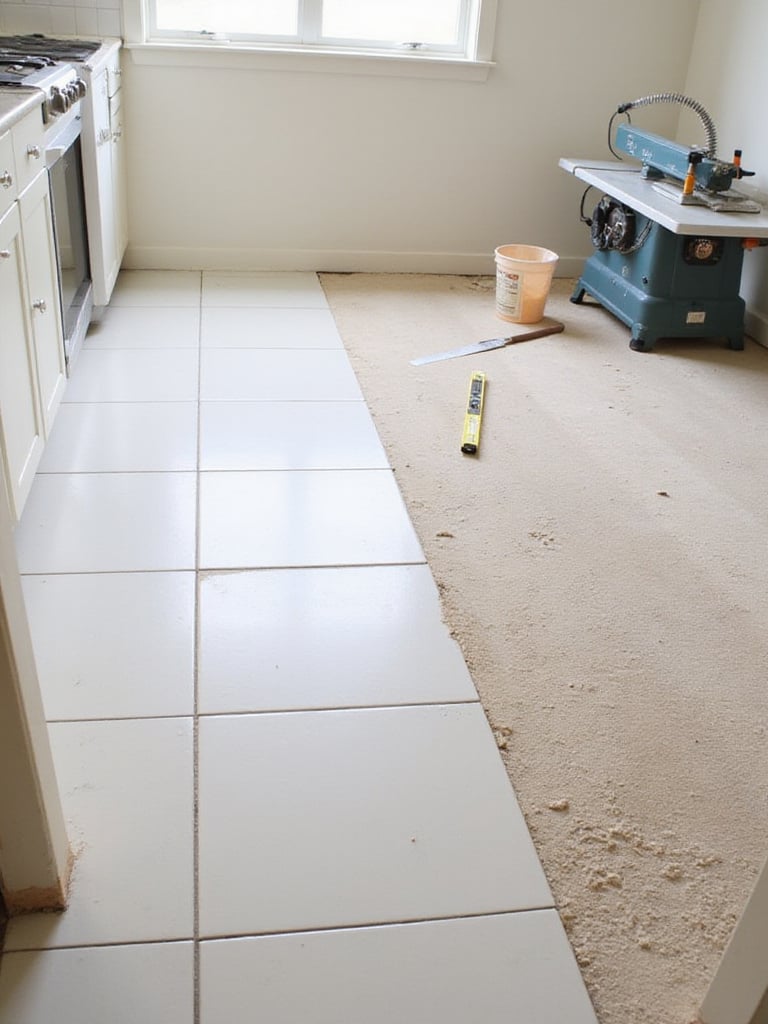
A pro knows how to handle these challenges. They know how to “cheat” a line to make it look straight in a crooked room. They have the right tools, like a wet saw for complex cuts around historic trim. And most importantly, they understand subfloor prep. From my work in architectural conservation, I’ve seen too many DIY tile jobs fail within a few years due to inadequate subfloor prep. The tiles start to crack or come loose, and the whole project has to be redone. Paying for a pro is paying for peace of mind.
Grout isn’t just the stuff between the tiles; it’s a design tool. It defines the entire look of your floor. Do you want to see the shape of each individual tile? Use a contrasting grout. Want the floor to look like a single, unified surface? Match the grout color to the tile.
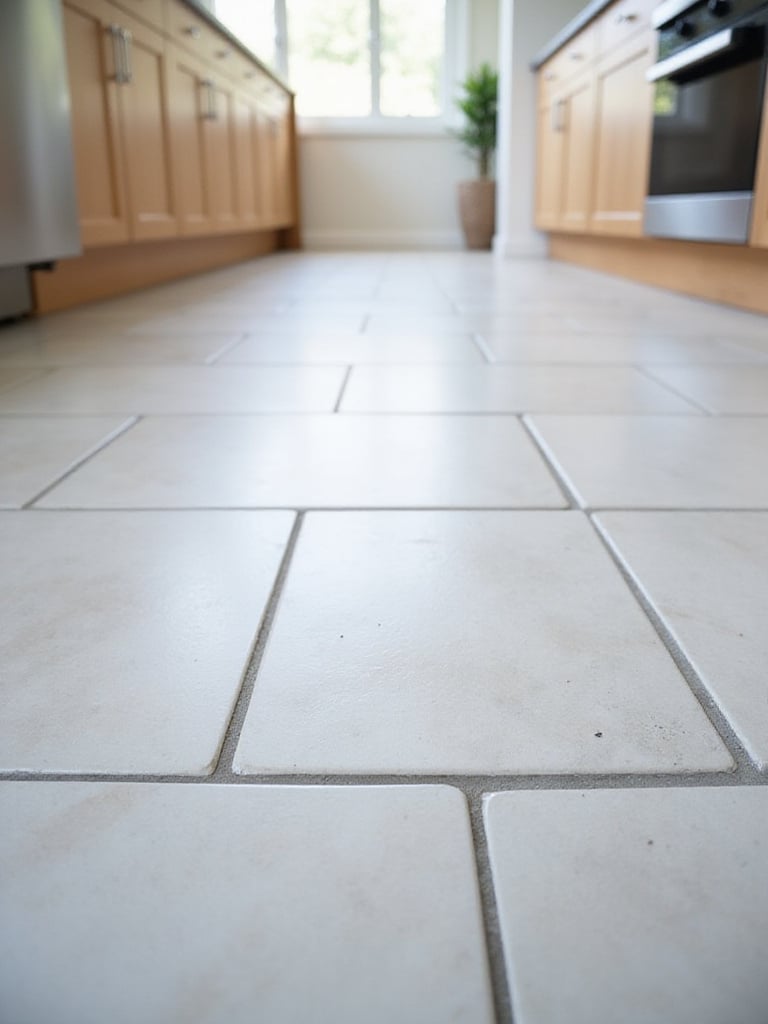
For older homes, grout color can be a nod to history. Historically, grout lines were often much thinner and less noticeable than they are today. A matching grout, especially a darker one, tends to look more authentic and has the huge practical benefit of hiding stains. In a rustic farmhouse kitchen, a slightly wider, sand-colored grout can add to the charm. But be intentional. In my experience, a medium gray is the most forgiving and versatile grout color for almost any kitchen floor. It has enough color to hide dirt but is neutral enough not to clash with your tiles or cabinetry.
The single biggest complaint about tile floors? They’re cold. This is especially true in older homes, which are often draftier and have uninsulated crawl spaces or basements. But here’s a perfect example of modern functionality beautifully integrated into a period setting: radiant underfloor heating.
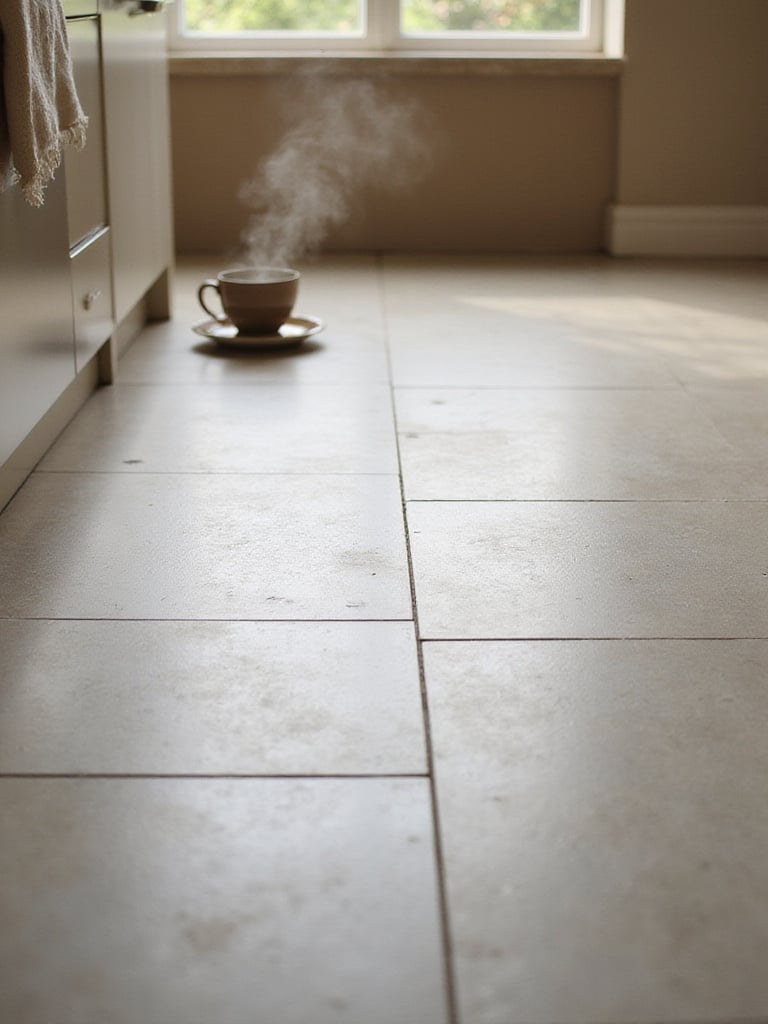
Tile is a brilliant conductor of heat. Installing an electric radiant heating mat under your new tile floor is a game-changer. It transforms a cold, hard surface into something luxurious and welcoming. It’s an invisible, silent, and energy-efficient way to heat your kitchen. For a homeowner updating a historic property, it feels like the ultimate win-win. You get the durability and period-appropriate look of tile, with a level of comfort the original inhabitants could only have dreamed of.
The kitchen is a flurry of activity and, let’s face it, spills. Water, oil, a dropped egg—they all create a slip hazard. This isn’t just a modern problem; it’s a timeless one. When choosing a tile, safety has to be a top consideration, especially in a multi-generational home.
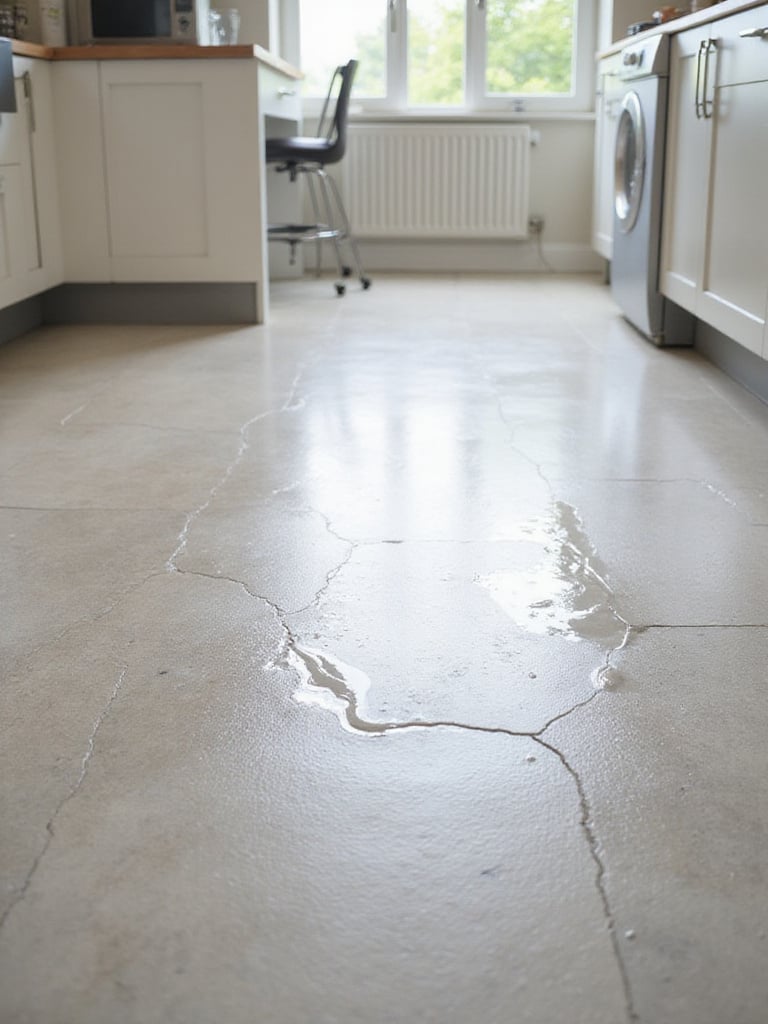
Look for a tile’s DCOF (Dynamic Coefficient of Friction) rating. You want a rating of 0.42 or higher for a kitchen floor. But a simpler rule of thumb is to avoid high-gloss, polished surfaces. They look beautiful in a showroom but are dangerously slick when wet. Matte, honed, or textured finishes provide much better grip. And here’s a fun fact: smaller tiles can actually be safer, because the higher number of grout lines provides extra traction. It’s one reason you often see small mosaic tiles in historic bathrooms.
Yes, tile is hard. There’s no getting around it. Its density is what makes it so durable, but it’s also what makes it unforgiving on our joints if we’re standing for a long time. It’s also unforgiving on a dropped wine glass. Shattered. Every time.
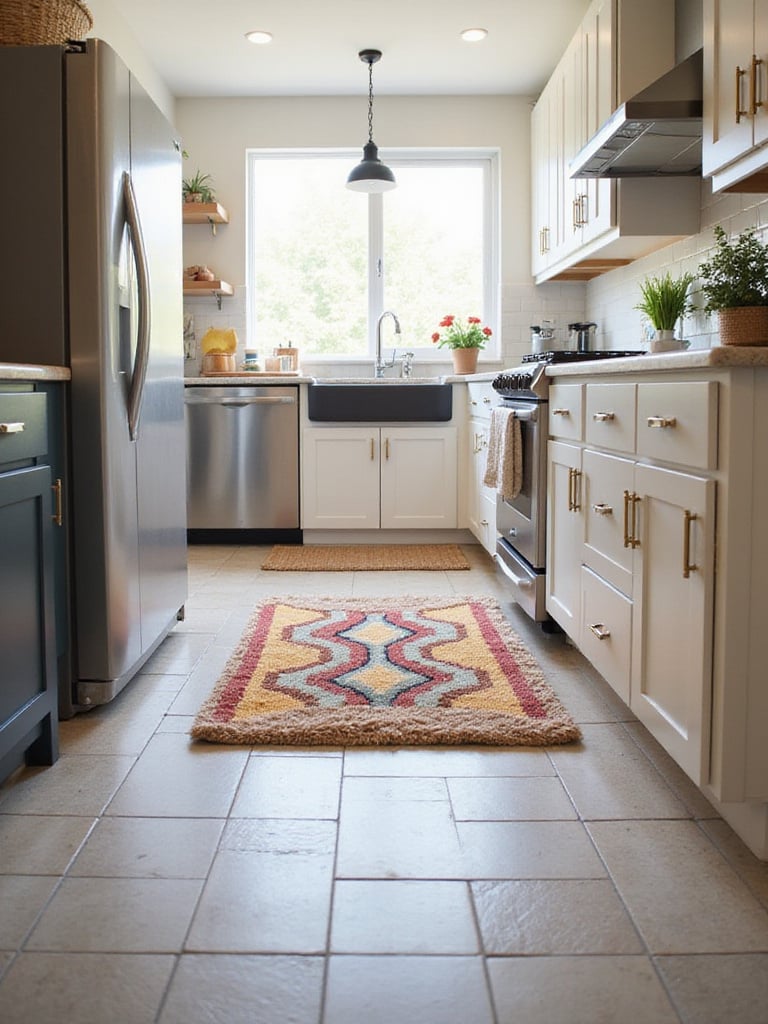
But this is a solvable problem. You don’t have to sacrifice comfort for durability. The answer is surprisingly simple: anti-fatigue mats. Placing good, cushioned mats in your main work zones—in front of the sink, the stove, and your primary prep counter—makes a massive difference. You get targeted comfort right where you need it most, without covering up your beautiful floor. What I tell my clients is that this is a place to embrace modern ergonomics. We can love the character of our old house while still being kind to our bodies.
Accidents happen. A tile will eventually crack or chip. One of the great virtues of a tile floor, unlike sheet vinyl or laminate, is that you can perform surgery. You can replace a single damaged tile without having to tear out the whole floor.
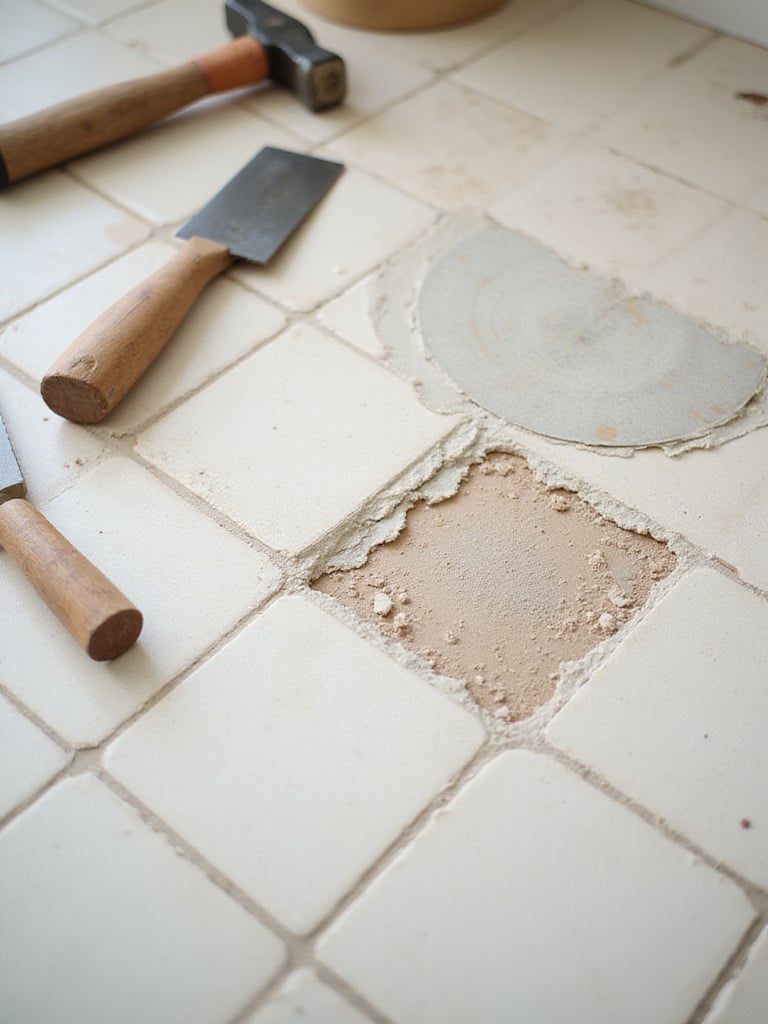
This brings me to the single most important piece of advice I can give you. When you buy your tile, ALWAYS buy at least 10-15% extra. Store the extra boxes in the attic, the basement, a dry shed—anywhere safe. In five or ten years, when a tile gets damaged, the chances of finding a perfect match from the same dye lot are practically zero. Having those extra tiles on hand will feel like you’ve won the lottery. It’s the ultimate preservationist move: planning for the future life of the building.
I’m always a little wary of trends when it comes to older homes. Your house has a timeless quality, and your floor should too. That said, it’s good to know what’s out there. Large-format tiles are very popular because they mean fewer grout lines and create a clean, expansive look. Wood-look porcelain remains a bestseller, though I confess it’s not my favorite choice for a truly historic home—it feels like an unnecessary imitation when so many honest materials are available.
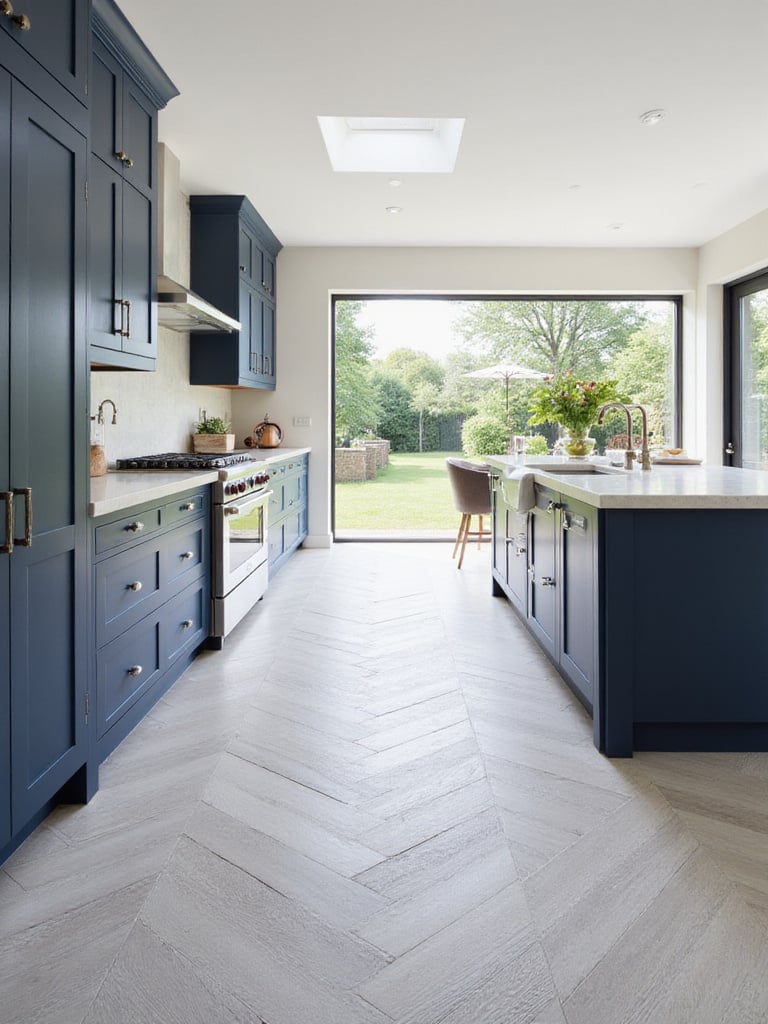
The “trends” that I think have real staying power are the ones rooted in history. We’re seeing a huge resurgence of patterned tiles inspired by Victorian encaustics, beautiful geometric layouts like herringbone and chevron, and the warm, earthy feel of terracotta. These styles feel current, but they also have deep historical roots, which helps them blend more naturally into a period home. They feel both fresh and familiar.
While porcelain is my go-to for practicality, let’s not forget the soul-stirring beauty of natural stone. A slate floor in a rustic kitchen is just unbeatable for character. Its natural cleft texture is inherently slip-resistant and wears beautifully over time. Soapstone is another historic choice, offering a soft, almost velvety feel underfoot that patinas to a rich, dark gray.
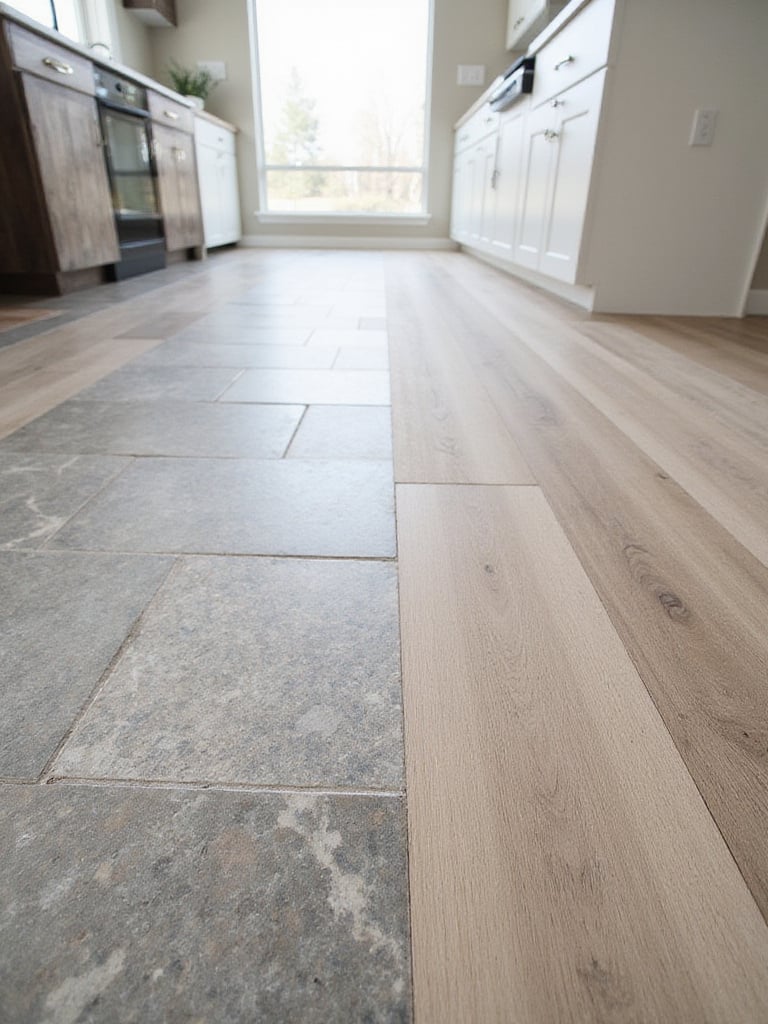
And then there’s my personal passion: architectural salvage. Finding a cache of antique encaustic cement tiles from a demolished villa or reclaimed terracotta from an old farmhouse is a thrill. These tiles bring an immediate and authentic layer of history to your project that you simply cannot replicate with new materials. They’re not for every project or budget, but if you have the chance, it’s a way to let your floor tell a story that’s even older than your house. It connects your home to a wider architectural history.
There’s a common decorating tip that says you should use large tiles to make a small room look bigger. I think that’s a bit too simplistic for an older home. You have to consider the scale of the entire house. A massive 24×48 inch tile might look sleek in a modern loft, but it can feel completely out of proportion in a cozy 1920s bungalow kitchen with lower ceilings and smaller-scale woodwork.
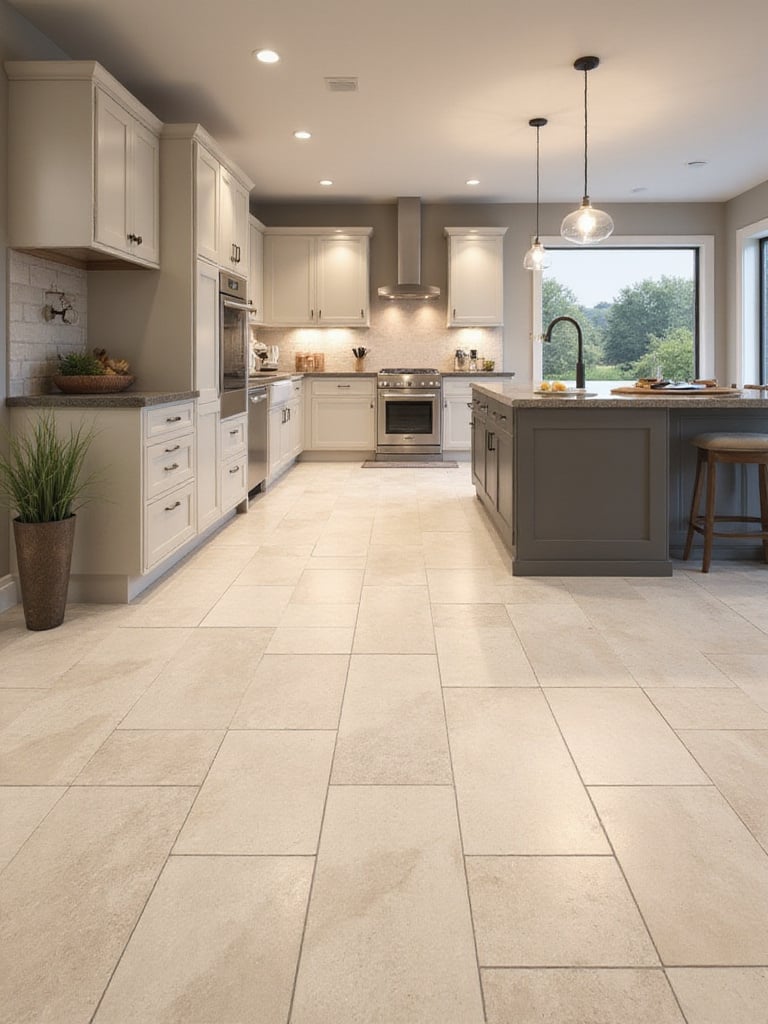
The key is balance. In a small kitchen, a medium-sized tile—say, 8×8 or 12×12—often feels more appropriate than something tiny (which can look busy) or something huge (which can look awkward). In my experience with historical renovations, the tile size should be in harmony with the other architectural elements. Look at the size of the windowpanes, the width of the door casings. Choosing a tile that feels in scale with these original details will help it feel like it truly belongs.
The floor is the foundation of your kitchen’s design. It needs to work with your cabinets, countertops, and backsplash, not fight with them. If you have beautifully figured wood cabinets or a dramatic granite countertop, your floor should probably be a quiet supporting actor, not the star of the show. A simple, neutral stone-look tile would be perfect.
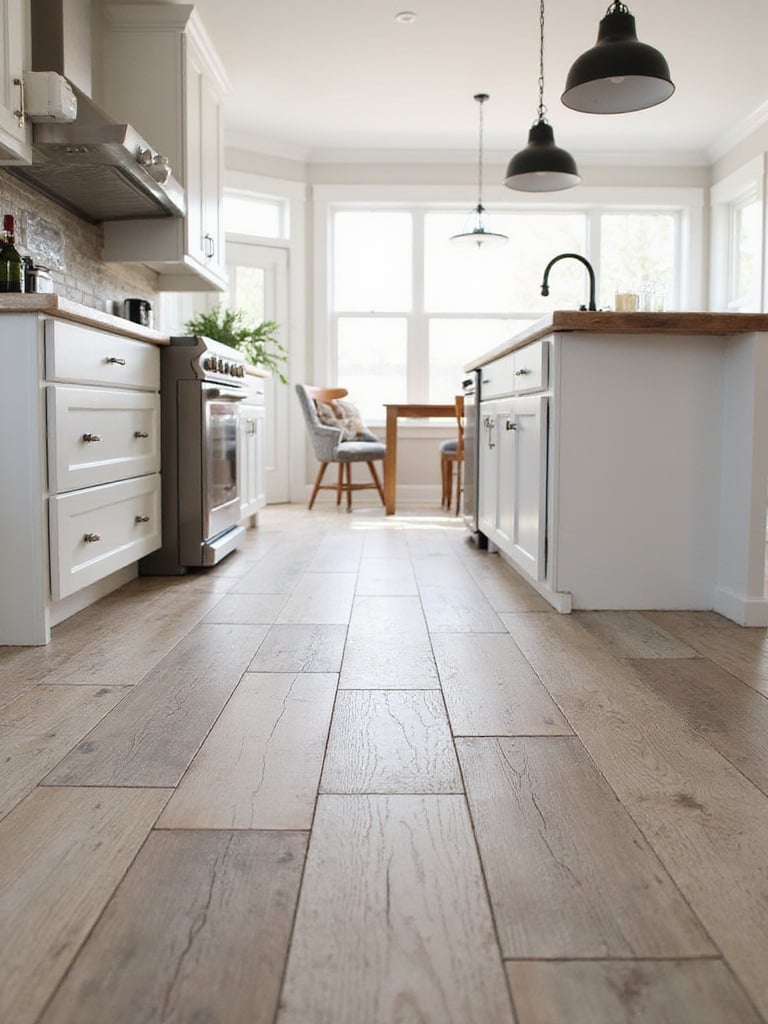
But if you have simple, painted shaker cabinets and a quiet countertop, your floor has a chance to be the main event! This is the perfect place for a bold checkerboard, a dynamic herringbone, or a vibrant patterned tile. My work is all about this balance. In a Craftsman kitchen, I might lean toward a matte green or terra cotta tile that echoes the earthy tones of the period. For a more formal Georgian or Colonial Revival home, a classic black and white diamond pattern is timeless and always looks right.
Even the simplest, most affordable square tile can be elevated by a thoughtful layout. A standard grid is fine, but just by turning it 45 degrees into a diagonal pattern, you instantly add energy and can make a narrow kitchen feel wider. A running bond (or brick pattern) is a classic for a reason—it’s simple but adds a subtle sense of movement.
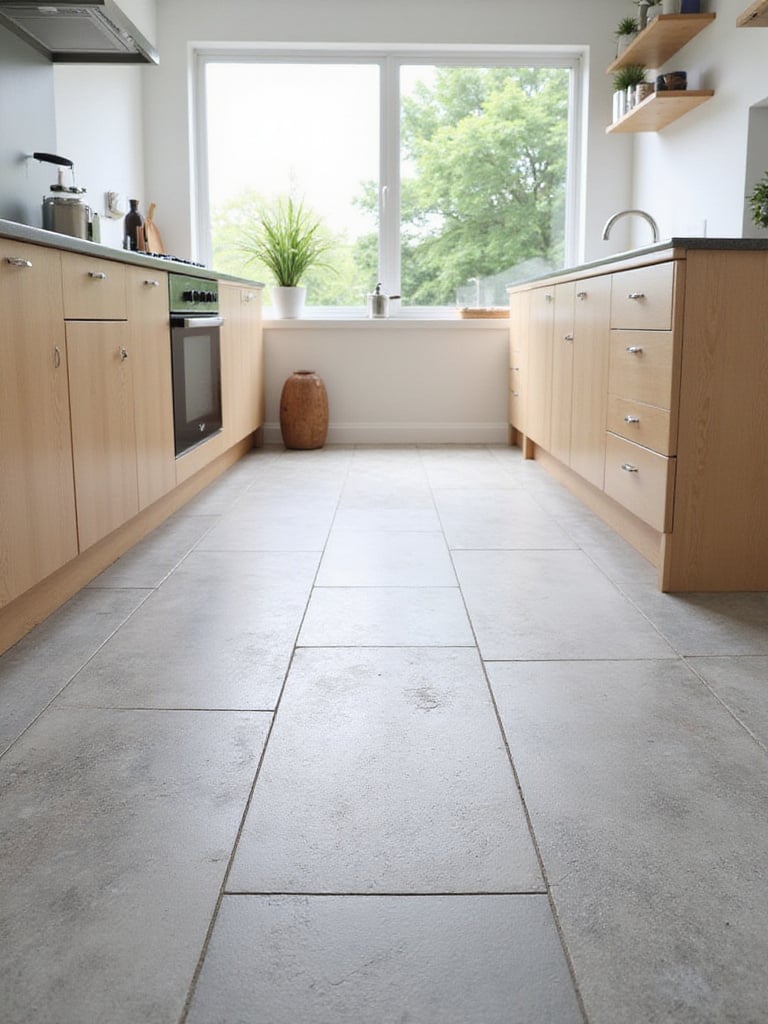
For me, the real magic is in historic patterns. I once pulled up old flooring in a farmhouse to find the faint “ghost” of a checkerboard pattern on the subfloor, painted there over a century ago. We honored that by installing a new, durable porcelain checkerboard floor. It was a nod to the home’s past that felt completely fresh. Patterns like herringbone, basketweave, and pinwheel require more skill to install, but they add a layer of custom craftsmanship that deeply honors the spirit of an older, well-built home.
I’ve said it before, but it bears repeating: sealer is your best friend. All grout needs to be sealed. All of it. And if you opt for the breathtaking beauty of natural stone—like marble, travertine, or limestone—sealing isn’t a suggestion; it’s a command. These stones are porous and will drink up any liquid they meet.
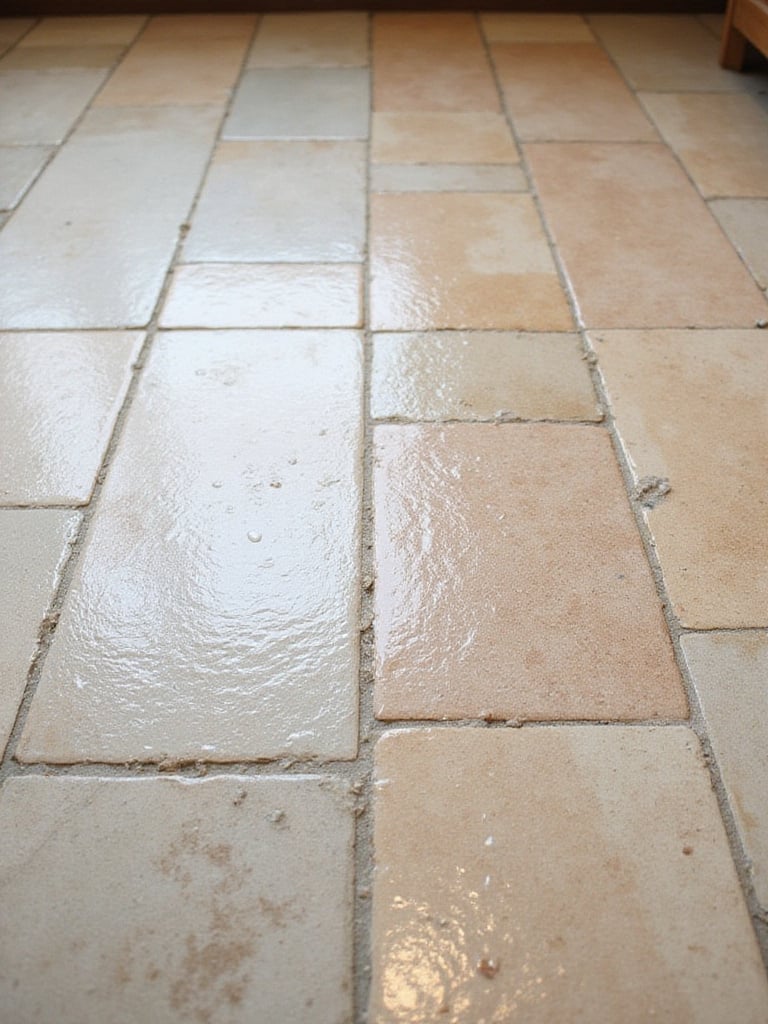
Think of sealer as an invisible shield. A good “impregnating” sealer soaks into the pores of the stone and grout and repels water and oil without changing the look of the tile. You’ll need to reapply it every year or two, but it’s an easy job. Just wipe it on and wipe it off. How do you know when it’s time? Drip a little water on the grout or stone. If it beads up like on a freshly waxed car, you’re good. If it soaks in and darkens the surface, it’s time to reseal. It’s the single most important bit of maintenance for ensuring your beautiful floor stays beautiful.
No flooring material is perfect, but I believe tile comes closer than anything else for an older home’s kitchen.
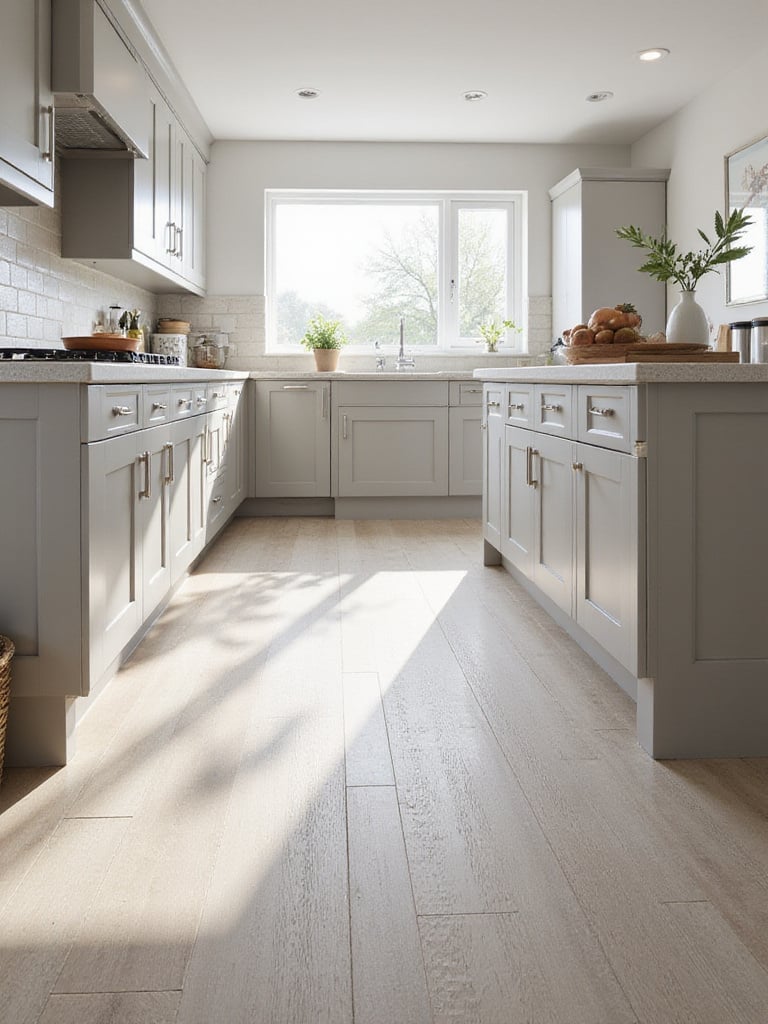
The pros are significant: It’s incredibly durable and long-lasting. It’s waterproof, which protects the historic structure of your home. The design possibilities are nearly infinite, allowing you to find something that perfectly suits your home’s era. But the cons are real, too. It’s hard and cold underfoot (though both issues are solvable). The installation is more complex and expensive, especially given the quirks of old houses. And grout lines require maintenance. For me, the scales tip heavily in tile’s favor. Its longevity and protective qualities are massive assets when you’re acting as a caretaker for a piece of history.
A thoughtful restoration doesn’t have to be outrageously expensive. There are absolutely ways to get a fantastic, durable, and appropriate tile floor on a reasonable budget. Basic ceramic tile is always the most affordable option. But my number one tip for this is to look for overstock and clearance tile. When a tile line is discontinued, big stores sell off the remaining stock for a fraction of the price. You can get high-end porcelain for ceramic prices.
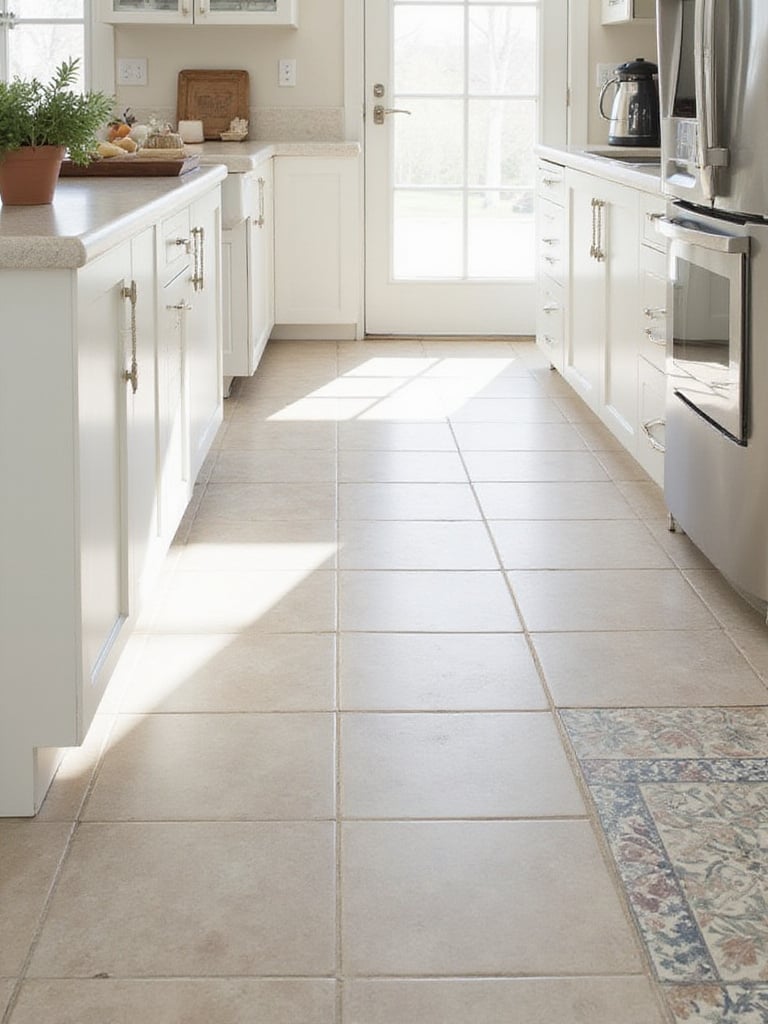
And don’t forget architectural salvage yards and places like Habitat for Humanity ReStore. It takes patience, but I have found incredible deals for clients this way. I once found an entire pallet of beautiful, Italian-made porcelain tile at a salvage yard for 75% off retail because the boxes were damaged. The tiles were perfect. It’s about being a savvy hunter. A little legwork can save you thousands and give your project a unique story.
Choosing a kitchen floor is a commitment. In an older home, it’s a decision that should last for decades, becoming part of the house’s narrative. It’s the surface your family will live on, cook on, and gather on. By blending historical awareness with modern practicality, you can choose a floor that not only functions perfectly but also feels deeply, authentically right for the heart of your home.